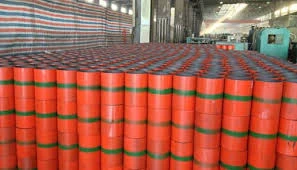- Afrikaans
- Albanian
- Amharic
- Arabic
- Armenian
- Azerbaijani
- Basque
- Belarusian
- Bengali
- Bosnian
- Bulgarian
- Catalan
- Cebuano
- Corsican
- Croatian
- Czech
- Danish
- Dutch
- English
- Esperanto
- Estonian
- Finnish
- French
- Frisian
- Galician
- Georgian
- German
- Greek
- Gujarati
- Haitian Creole
- hausa
- hawaiian
- Hebrew
- Hindi
- Miao
- Hungarian
- Icelandic
- igbo
- Indonesian
- irish
- Italian
- Japanese
- Javanese
- Kannada
- kazakh
- Khmer
- Rwandese
- Korean
- Kurdish
- Kyrgyz
- Lao
- Latin
- Latvian
- Lithuanian
- Luxembourgish
- Macedonian
- Malgashi
- Malay
- Malayalam
- Maltese
- Maori
- Marathi
- Mongolian
- Myanmar
- Nepali
- Norwegian
- Norwegian
- Occitan
- Pashto
- Persian
- Polish
- Portuguese
- Punjabi
- Romanian
- Russian
- Samoan
- Scottish Gaelic
- Serbian
- Sesotho
- Shona
- Sindhi
- Sinhala
- Slovak
- Slovenian
- Somali
- Spanish
- Sundanese
- Swahili
- Swedish
- Tagalog
- Tajik
- Tamil
- Tatar
- Telugu
- Thai
- Turkish
- Turkmen
- Ukrainian
- Urdu
- Uighur
- Uzbek
- Vietnamese
- Welsh
- Bantu
- Yiddish
- Yoruba
- Zulu
what is a bull plug used for
What Is a Bull Plug Used For?
A bull plug, often referred to in various contexts, typically has its origins in various industries, particularly in plumbing and fluid transfer systems. It serves a distinct purpose in sealing and terminating pipes, which is essential for maintaining the integrity of a system.
Definition and Design
A bull plug is essentially a type of plug that fits into the end of a pipe or connection to prevent the flow of fluids or gases. It is designed with a robust and sturdy construction to withstand high pressure and varying temperatures. Bull plugs come in various sizes and materials, including metals like stainless steel or brass, and plastics, which can accommodate different types of pipes, including PVC, CPVC, and steel.
Applications
1. Plumbing Systems In plumbing, bull plugs are essential components used to close off pipes temporarily or permanently. For instance, during maintenance or repair work, professionals often use bull plugs to seal off water supply lines, preventing leaks and providing a safe working environment.
2. Industrial Settings In industries where fluid transfer is crucial, such as oil and gas, bull plugs are used to cap off unused connections on pipelines. This ensures that no contaminants enter the system and that fluids do not leak, which could lead to environmental hazards.
what is a bull plug used for

3. Pneumatic Systems Bull plugs are also found in pneumatic systems where air pressure is utilized. They help secure air lines and ensure that the air pressure remains consistent, facilitating efficient operation in various applications, from machinery to automotive systems.
4. Testing and Maintenance In testing scenarios, bull plugs can be utilized to block ports and connections. This is critical during tests for leakage or integrity, allowing technicians to ascertain that the systems are functioning correctly without any surprises due to fluid loss.
Advantages
The use of bull plugs offers several advantages. They provide a reliable seal, which is crucial for preventing leaks. Their durable construction ensures a long lifespan, even in harsh environments. Moreover, they are easy to install and remove, making them user-friendly for maintenance personnel.
Conclusion
In summary, a bull plug is a vital tool in various industries, particularly in plumbing and fluid management systems. Its primary role is to seal pipes and connections, ensuring the secure containment of fluids or gases. With its wide range of applications—from plumbing to industrial uses—it plays an essential role in safeguarding material integrity and preventing environmental contamination. Over the years, the importance of bull plugs has been recognized in multiple sectors, highlighting their practicality and effectiveness in everyday operations. Whether for temporary maintenance or permanent solutions, bull plugs are indispensable components that contribute to the safety and efficiency of fluid management systems.
-
Tubing Pup Joints: Essential Components for Oil and Gas OperationsNewsJul.10,2025
-
Pup Joints: Essential Components for Reliable Drilling OperationsNewsJul.10,2025
-
Pipe Couplings: Connecting Your World EfficientlyNewsJul.10,2025
-
Mastering Oilfield Operations with Quality Tubing and CasingNewsJul.10,2025
-
High-Quality Casing Couplings for Every NeedNewsJul.10,2025
-
Boost Your Drilling Efficiency with Premium Crossover Tools & Seating NipplesNewsJul.10,2025







